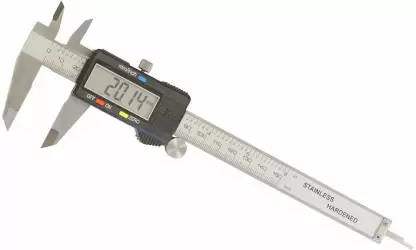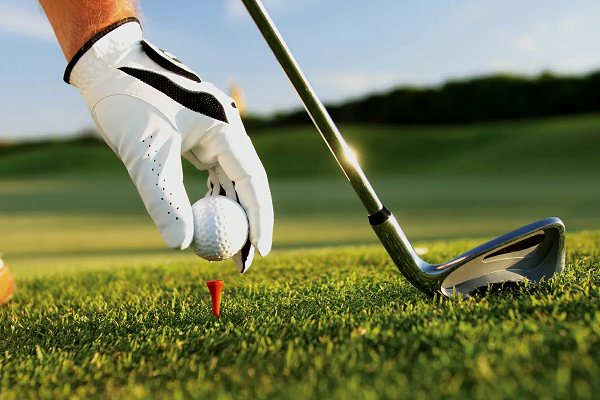Digital calipers are a must-have tool for any DIY enthusiast or professional mechanic. With their precision and accuracy, they allow you to take accurate measurements of objects with ease. However, with so many options available on the market, choosing the best digital caliper can be overwhelming. That’s why we’ve put together this guide to help you make an informed decision when selecting your next digital caliper. So sit back, relax and read on as we explore how to choose the best digital caliper for your needs!
Why Use a Digital Caliper?
Digital calipers are an essential tool for many professions, including mechanics, machinists, carpenters and engineers. They provide greater accuracy than traditional mechanical calipers as they can read measurements with a resolution of 0.0005 inches or less.
Using a digital caliper also eliminates the potential for human error when reading measurements. With a clear digital display that shows the exact measurement in real-time, there is no room for misinterpretation or guesswork.
Another benefit of using a digital caliper is their ability to switch between metric and imperial units effortlessly. Whether you’re working on a project that requires precise millimeter measurements or inch-based dimensions, digital calipers have got you covered.
Additionally, some models come equipped with advanced features such as data output capabilities and auto shut-off functions that help save battery life.
Using a digital caliper provides improved accuracy, speed and convenience over traditional measuring tools making it an indispensable tool in any professional toolbox.
How to Choose the Best Digital Caliper
When you’re in the market for a digital caliper, there are several factors to consider before making your purchase. To choose the best digital caliper for your needs, the first thing you need to decide is what type of caliper you want.
There are many different types of digital calipers available on the market today. The most common types include vernier, dial and electronic models. Vernier and dial models tend to be more affordable than electronic ones, but they typically have lower accuracy levels.
Accuracy is another important factor to consider when choosing a digital caliper. The accuracy level of a caliper determines how precise your measurements will be. Most high-quality digital calipers can measure within +/- 0.001 inches or millimeters.
Price is also an important consideration when shopping for a digital caliper. While it’s true that you get what you pay for, there are plenty of affordable options that still offer excellent performance at an attractive price point.
Make sure to look out for features such as easy-to-read displays, durable materials like stainless steel construction and water resistance if needed based on intended usage environment . By keeping these factors in mind while shopping around for your next tool investment ,you’ll be able to find the perfect fit and stay confident with its use!
-Type
When it comes to choosing the best digital caliper, one of the first things you need to consider is the type. Digital calipers come in two types: Vernier and Dial.
Vernier digital calipers are more accurate than dial ones. They have a higher resolution which allows them to measure smaller increments with greater precision. They’re also easier to read because they display measurements on an LCD screen.
Dial digital calipers, on the other hand, are less expensive than vernier ones and don’t require batteries since they use mechanical components instead of electronic ones. However, their readings can be harder to interpret due to their circular dials.
Choosing between these two types will ultimately depend on your needs and preferences. If you prioritize accuracy and ease of use, then a vernier digital caliper might be best for you. But if you’re working with a tight budget or prefer traditional measurement tools, then a dial digital caliper might suit your needs better.
-Accuracy
Accuracy is one of the most crucial factors to consider when choosing a digital caliper. The accuracy of a digital caliper refers to how closely it can measure an object’s dimensions compared to its actual size. A high-precision measurement tool like a digital caliper must be able to provide accurate readings consistently.
When looking for a digital caliper, always check its accuracy specification. It’s usually expressed in thousandths or hundredths of an inch or millimeter. For instance, if a digital caliper has an accuracy rating of 0.001 inches (or 0.02 millimeters), it means that it can measure up to one-thousandth of an inch with precision.
The best way to ensure that you’re getting accurate measurements from your digital caliper is by doing regular calibration checks using known standards such as gauge blocks or micrometers.
Keep in mind that various factors may affect the accuracy of your digital calipers such as temperature changes and wear over time due to constant use. Hence, it’s essential to choose a brand with reliable quality control measures and warranties against defects.
In summary, while there are many factors involved in selecting the ideal digital calipers for your needs, nothing beats having top-notch accuracy levels since this could make all the difference between obtaining precise and incorrect measurements during critical applications.
-Price
When it comes to digital calipers, the price can vary significantly depending on the brand and features. A basic digital caliper can cost as little as $10, while a top-of-the-line model from a well-known brand like Mitutoyo can cost over $200.
While it may be tempting to choose the cheapest option available, keep in mind that accuracy is crucial when measuring with a caliper. Cheaper models may not have the same level of precision as more expensive ones.
It’s important to consider your intended use for the digital caliper before making a decision based solely on price. If you plan on using it frequently or for more precise measurements, investing in a higher-end model may be worth it in the long run.
However, if you only need it for occasional use or less precise measurements, a cheaper option may suffice.
Don’t let price be the only factor in your decision-making process. Consider both your needs and budget when choosing the best digital caliper for you.
Features to Look for in a Digital Caliper
When choosing a digital caliper, it’s important to consider the features that will best suit your needs. Here are some key features to look for:
1. Measurement Range: Make sure the digital caliper you choose has a measurement range that matches your needs.
2. Accuracy: Look for a caliper with high accuracy as this is essential in making precise measurements.
3. Material and Durability: Check the construction of the caliper and ensure it’s made from durable materials that can withstand harsh conditions.
4. Display Type: A good display type should be easy to read and have clear markings for accurate readings.
5. Battery Life: Choose a digital caliper with long battery life so you won’t have to worry about replacing batteries frequently during critical moments.
6. Ease of Use: The caliper should be easy to use, with intuitive buttons or controls, allowing you to take quick measurements efficiently without interruption or delay.
7. Conversion Capability: If you need multiple units of measurement, make sure your chosen device offers conversion capability between different units like inches, millimetres etc
By considering these features when making your choice, you’ll end up selecting a digital caliper which will provide reliable results while meeting all necessary requirements needed by professionals and hobbyists alike!
Top 5 Digital Calipers
When it comes to choosing the best digital caliper, there are a plethora of options available in the market. Here are our top five recommendations for digital calipers.
First on our list is the Mitutoyo 500-196-30 Advanced Onsite Sensor (AOS) Absolute Scale Digital Caliper. It has an accuracy of up to 0.0005 inches and includes a large LCD display for easy reading.
Next up is the iGaging IP54 Electronic Digital Caliper with Extra Large Display. Its waterproof design makes it ideal for use in wet environments, while its simple operation and high accuracy make it perfect for both professionals and DIY enthusiasts alike.
The Neiko 01407A Electronic Digital Caliper boasts a stainless steel construction and can measure internal, external, depth, and step dimensions accurately. Additionally, its hardened stainless steel body ensures longevity even under heavy usage.
Coming in at number four is the Fowler Full Warranty Stainless Steel Frame Inch/Metric Absolute Dial Caliper. With an accuracy of ±0.001″, this caliper features a thumb roller that allows effortless fine adjustment as well as zero setting at any position.
Last but not least is the Anytime Tools Premium Precision Electronic Digital Caliper – a budget-friendly option that doesn’t compromise on quality or accuracy. Its rugged stainless steel construction houses an extra-large LCD readout that displays measurements in inches or millimeters.
These top five digital calipers offer varying degrees of precision and functionality to suit different needs and budgets – choose one that fits your requirements perfectly!
How to Use a Digital Caliper
Using a digital caliper might seem intimidating at first, but it is actually quite simple. The first step is to turn on the device by pressing the power button. Once it’s on, make sure that the display screen shows zero.
To use the caliper to measure an object, start by opening the jaws of the tool wide enough to fit around it. Then gently close them until they are snug against both sides of whatever you’re measuring. Be careful not to apply too much pressure or you could damage your measurements.
Next, read and record the measurement shown on the digital display screen in either inches or millimeters depending on your preference. Some digital calipers even have options such as data hold and conversion functions for added convenience when taking measurements.
When finished with your measurements be sure to clean off any debris from your tool and store it properly for future use. With these tips in mind, using a digital caliper will become second nature in no time!
Conclusion
A digital caliper is an essential tool for precision measurement in various applications such as engineering, woodworking, metalworking, and many more. Choosing the best digital caliper can be daunting due to the variety of brands and models available in the market.
However, by considering factors such as type, accuracy level, price range, and features that suit your needs will help choose the ideal digital caliper for you. Remember to always check customer reviews before making a purchase decision.
Once you have chosen your preferred digital caliper model based on your specific requirements, ensure that you know how to use it correctly for accurate measurements.
Investing in a high-quality digital caliper not only saves time but also provides accurate results with minimal human error. Therefore take time to research and invest in quality equipment since it pays off over time.



